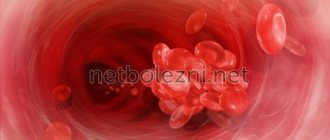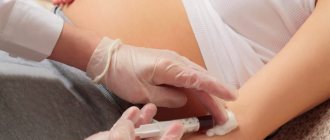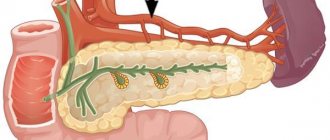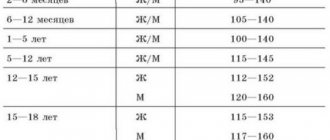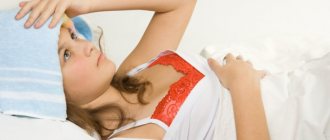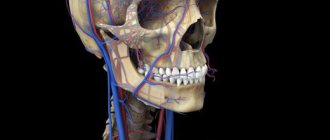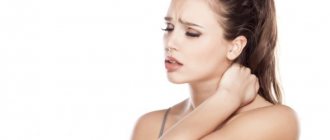1Auto-training and psychotherapy
Appointment with a psychotherapist
For a patient suffering from vegetative-vascular dystonia and panic attacks, it is very important to be able to cope with stress on his own and to master self-hypnosis techniques that can reduce the symptoms of VSD. Psychotherapy is a very important method of treating VSD. Before starting to take antidepressants, the patient should contact a competent psychotherapist who will explain to the patient the essence of his disease, will definitely emphasize its benignity, favorable prognosis, and teach methods of dealing with stress and relaxation.
And, perhaps, the patient will do without the need to take medications. The ability to properly relax, positive thinking, and breathing therapy methods can have a much greater effect in the treatment of VSD than simply taking medications.
Treatment of PA
First of all, contact a qualified psychotherapist, preferably with experience in treating panic attacks. You may need to take medicine to relieve particularly severe attacks.
Psychotherapy is mandatory in any case - this is the main method of treatment. Over time, vegetative crises fade away, and the likelihood of a recurrence of PA is reduced to almost zero. Treatment prescribed on time and carried out without interruption helps to completely get rid of the disease.
What is this condition
The pathology is characterized by emotional instability of patients, unreasonable anxiety, and fear, which significantly worsen a person’s quality of life. The doctor will tell you how to treat VSD and panic attacks, and you should definitely contact him, since the patient will not be able to get rid of this condition on his own.
VSD is a set of symptoms that define psychogenic disorders and cause malfunction of peripheral nerves. Patients experience panic syndrome, accompanied by increased emotional excitability. The patient is afraid to be alone, he is overcome by obsessive fear and anxiety, but there is no reason to worry, nothing threatens his health.
Frequent attacks of unreasonable panic deplete a person’s nervous system, and a phobia develops. It seems to him that the next attack will definitely bring death. The patient is not able to cope with anxiety syndrome on his own, since knowledge of the rules of self-control is required. A psychotherapist will tell you how to deal with VSD and panic attacks, because it is he who can treat such disorders in the functioning of the autonomic nervous system. The doctor will help the patient get rid of attacks forever.
Osteopathy as one of the methods of treating panic attacks
An osteopathic doctor does not practice drug therapy and views panic attacks not as a separate disease, but as a sign of a systemic disease. Therefore, his task is not to relieve symptoms or increase the time period between seizures, but to eliminate the root cause of the condition.
In an osteopath's office, the problem of anxiety disorders is solved by using hands to influence the musculoskeletal system. Using precisely controlled movements of varying intensity, the doctor eliminates spasms and restores communication between parts of the autonomic nervous system.
Treatment is carried out after diagnosis. During the inspection, the following techniques are used:
- Passive tests. The subject is asked to relax. The receiving doctor independently changes the position of the patient’s limbs and monitors the angle of inclination, the elasticity and plasticity of the muscles.
- Active research. The visitor assumes poses in which pathological changes in the skeleton, sagging and ptosis of the muscles become noticeable.
Additionally, load tests and tensile tests are used. To understand the condition, a conversation is conducted, test results are also studied and a psycho-emotional portrait is drawn up. When describing a person, take into account:
- gestures;
- intonation;
- speed, tempo of speech;
- lexicon;
- gait.
After a comprehensive examination, a treatment program is drawn up. During therapy, the specialist uses 1 or several techniques. Regardless of the chosen approach - complex or monotherapy - the main emphasis is on craniosacral technique.
What Causes Panic
A panic attack develops as a result of the release of a large amount of adrenaline, a hormone that stimulates the nervous system, putting it on alert. Women often suffer from this pathology, since their bodies are more prone to emotional changes. Seizures are divided into three types, depending on the situations that caused them.
- The spontaneous type develops abruptly, without any basis.
- Situational has a basis for manifestation and is provoked by specific factors (quarrel, conflict, exam).
- Conditional-situational is a consequence of an unpleasant phenomenon, stress, and can manifest itself as a sign of prolonged depression.
An attack may be a companion to vegetative dystonia. It occurs against the background of various situations, not always negative, and is also observed after suffering stress. In addition, panic can be triggered by:
- mitral valve prolapse;
- hyperthyroidism;
- osteochondrosis of the cervical spine;
- hypoglycemia.
A panic attack accompanies women during menopause and is caused by hormonal imbalance, which leads to instability of the emotional state.
The root causes of VSD:
- violation of the anatomical integrity of the musculoskeletal system;
- birth injuries;
- spine surgery;
- infectious diseases;
- hormonal disbalance;
- intrauterine pathologies.
The condition develops not only for reasons of traumatic, infectious and perinatal nature, but also after severe stress. Sometimes VSD occurs not as a result of the operation itself, but because of a person’s attitude towards surgery and his behavior during the recovery period.
Remedy for vegetative-vascular dystonia: general principles of treatment and basic therapy
Vegetative-vascular dystonia is a disease or syndrome during which a person may experience a variety of symptoms and disturbances in the functioning of body systems. This is usually due to a failure in nervous regulation.
The autonomic (nervous) system itself is aimed at controlling all internal organs, so failures in its operation can negatively affect completely different human systems - digestive, cardiovascular, mental and others.
Before considering effective remedies for vegetative-vascular dystonia, you should understand the general principles of treatment for this disease.
All treatment for VSD does not have to be medicinal. Lifestyle correction and traditional treatment, which is primarily aimed at normalizing the functioning of the central nervous system, bring very good success.
First of all, patients diagnosed with VSD need to have a stable daily routine, proper rest and eight hours of sleep.
In addition, the quality of sleep itself plays an extremely important role - the room should not be too stuffy or hot. The pillow and bed should be comfortable. Doctors also advise using an orthopedic type of pillow and mattress.
It is important to reconsider your work schedule and learn to evenly combine mental and physical work. To reduce the frequency of panic attacks, it is recommended that a person minimize the time spent in front of the TV and computer monitor.
If the patient’s work is inextricably linked with long periods of time at the computer, regular exercises for the eyes and back are indicated.
Active physical activity is considered very beneficial. It will help tone muscles, improve heart function, stabilize blood pressure and will also have a beneficial effect on the functioning of the nervous system. Activities that take place in the fresh air are especially helpful. This could be dancing, cycling, skiing, running.
Advice
The main thing is that physical activity takes place regularly and makes a person move. At the same time, doctors warn to engage in sports that place too much stress on the body, as this will further overload the blood vessels, which will negatively affect the course of VSD.
The next mandatory stage of treatment (a remedy for vegetative-vascular dystonia) is adherence to dietary nutrition. The diet must be enriched with foods rich in magnesium, calcium and potassium. These substances will normalize the transmission of impulses in the nervous system, improve the functioning of blood vessels and the heart, and also stabilize the general functions of the central nervous system.
Thus, more nuts, fish, herbs, dried fruits, porridge, beans and carrots should be added to the menu.
It is very useful for VSD to drink drinks to increase vascular tone. These are green tea and milk. At the same time, you should completely limit the consumption of alcohol, strong tea and coffee.
The physiotherapy method works great. With its help, you can normalize the functioning of the nervous system, improve blood circulation and metabolism. At the same time, the list of possible methods used is quite wide: it can be electrophoresis with medicinal tinctures, laser irradiation, paraffin treatment, swimming and contrast showers. Physiotherapy should be supervised by the attending physician.
Massage and acupuncture are used less frequently. With their help, you can normalize blood pressure, relieve anxiety and improve sleep.
Medicinal herbs help very well. In this case, a person can take tincture of motherwort, chamomile, and valerian. Before doing this, it is recommended to consult a doctor about contraindications and allergic reactions.
Basic therapy involves the use of the following medications for vegetative-vascular dystonia:
- Preparations containing potassium and magnesium, which will improve the transmission of nerve impulses and vascular tone (Asparkam, Panangin, Pantogam, Phenazepam, Actovegin, Fezam for VSD).
- Drugs to improve blood circulation in the nervous system (Adaptol, Eltacin, Kurpatov, Tenoten).
- Medicines to lower blood pressure (Anapirilin).
- Phenibut is used less frequently for VSD.
You need to choose a remedy for vegetative-vascular dystonia very carefully and carefully, because general therapy should be aimed not only at relieving symptoms, but also at addressing the root cause of the disease.
It is better if the attending physician prescribes medications, since self-medication can only worsen a person’s condition.
Vegetative-vascular dystonia can occur in three main forms:
- Hypotonic type.
- Hypertensive type.
- Mixed type.
Each of these types of disease is accompanied by separate symptoms, and therefore requires different medications.
Drugs for VSD of the hypertensive type should be aimed at normalizing blood pressure, eliminating headaches and dizziness.
Also, medications for VSD of the hypertensive type must necessarily be aimed at normalizing the functioning of the cardiovascular system.
Typically, the following drugs are prescribed for this purpose for VSD of the hypertensive type:
- Potassium, Corvaldin, Corvalall - used for tachycardia.
- Grandaxin for VSD and Kralonin are used as homeopaths.
- Cinnarizine for VSD.
- Glycine for VSD.
During VSD of the hypotonic type, a person experiences neurosis and pronounced nervous deviation. He may have depression, headaches, sleep disturbances, fears, and apathy.
The following drugs are usually prescribed for hypotonic VSD:
- Antidepressants to normalize the functioning of the central nervous system.
- Hormonal drugs.
- Drugs to normalize blood circulation in the brain (Piracetam for VSD, Glycine for VSD).
- Vitamins.
Drugs for hypotonic VSD in the form of tranquilizers can also be used.
With a mixed type of VSD, the disease will be unstable, with frequent changes in symptoms. In this case, therapy is carried out based on the patient’s condition and the observed symptoms.
Some of the most effective drugs for this disease are antidepressants for VSD and tranquilizers for VSD. They are aimed at eliminating fears, anxiety, and depression.
Antidepressants are no less beneficial for VSD. They improve mood, stabilize neurocirculatory functions in the nervous and cardiovascular systems.
The most commonly prescribed antidepressants for VSD are:
- Leviron.
- Cipralex.
- Parisidol.
Popular tranquilizers for VSD are:
- Nozepam.
- Tazepam.
- Napoton.
- Elenium.
You should know that these drugs (tranquilizers for VSD and antidepressants for VSD) must be selected very carefully, since some of them are addictive and can further worsen the patient’s condition.
Vitamins for VSD play a very important role in the treatment of this disease.
It is especially useful for adolescents, men and women to take the following vitamins for VSD:
- Magnesium.
- Calcium.
- Vitamin E, A, group B.
The attending physician may also prescribe additional vitamins for VSD.
Herbal medicine shows excellent results in the treatment of this disease. In this case, the patient can take medications with valerian, motherwort and hawthorn. Teas and tinctures can be made from these herbs.
Traditional medicine offers the following recipes for the treatment of VSD:
- Pour 10 g of motherwort with a glass of boiling water. Infuse and take two spoons before bedtime.
- Pour boiling water over 20 g of hawthorn fruit and leave for half an hour. Take a spoon three times a day.
- Mix 20 g of rose hips, the same amount of currants, lemon balm and nettle. Pour 0.5 liters of boiling water. Take half a glass three times a day.
Drug treatment
The following groups of drugs are used in the treatment of VSD and panic attacks:
- Herbal sedatives: valerian, novopassit, persen, motherwort herb. They have a sedative effect and normalize the function of brain structures.
- Tranquilizers: elenium, sibazon, phenazepam, grandaxin. A group of drugs reduces feelings of fear, tension, and anxiety. They can be prescribed before expected stressful situations to prevent the development of panic attacks; the recommended duration of taking the drugs is 2-3 weeks.
- Antidepressants: amitriptyline, imipramine, teralen. The drugs are indicated for depressive disorders and masked depression. Doses of drugs should be individually selected by “titration”: starting with small ones, gradually increasing to optimal ones. As the patient's emotional background stabilizes, the dose of the drug may be reduced.
- Nootropics: piracetam, actovegin, cerebrolysin. This group of drugs improves energy processes and blood supply to the brain in the treatment of VSD; they also improve memory, mental performance; while taking them, the number of panic attacks, if the patient had any before treatment, is reduced.
Causes
In modern medicine, panic attacks are not included in the list of VSD diseases, but nevertheless, it is this syndrome that causes the development of some symptoms.
An exact definition of the reason why these conditions occur has not been established, but they exist under the condition of stress, heredity and hormonal imbalance. VSD with panic attacks manifests itself not only on a psychological level, but also on a physical level.
The development is provoked by factors such as:
- Hormonal imbalance. For example, most often this condition occurs in adolescents whose bodies are literally raging with hormones. Pregnant women often suffer from the same thing, as well as women after forty years of age when they experience menopause.
- Phobias, but only those that are of a particularly pronounced nature; how to get rid of them is described below.
- Chronic diseases, which include: VSD, diabetes mellitus, thyroid dysfunction, as well as disorders of the cardiovascular system.
Moreover, panic is a symptom of vegetative-vascular dystonia.
This condition itself is an episode of life during which a person has a pronounced feeling of fear and anxiety, which are also manifested by autonomic disorders. The autonomic system is very unstable, and any overstrain can provoke the development of this condition, this can be both mental and physical overstrain. When answering the question of how to get rid of VSD, that is, from this condition, you must first of all pay attention to something small, pleasant, some object or process that will help concentrate and distract your own attention.
But in addition to everything listed above, the cause of a panic attack can also be severe pain in the body, as well as pathologies in the heart.
Clinical picture
Symptoms of a sudden panic attack during VSD are expressed by disruption of not only the autonomic nerves, but also dysfunction of the cardiovascular system. This causes an increase in blood pressure, which is manifested by:
- dizziness;
- increased sweating;
- tachycardia;
- tinnitus;
- visual impairment.
In the absence of emergency care, the development of a hypertensive crisis and its complications – stroke. Seizures can provoke a reverse reaction in the patient - hypotension. In this case, the signs of panic attacks during VSD are as follows:
- nausea;
- hand trembling;
- disorientation in space.
Due to the fact that vascular tone decreases, such patients develop a prefainting state. They begin to sweat, are afraid to be alone, and feel a tingling sensation in their fingertips. The main symptom of a panic attack is strong, unreasonable fear, which can cause a person to behave inappropriately (be aggressive or be depressed).
Symptoms of a panic attack
The ability to distinguish between a dangerous condition and the usual feeling of fear or anxiety before some event can help quickly relieve an attack and alleviate the condition, and sometimes save a person’s life. Signs and manifestations of a panic attack with vegetative-vascular dystonia include the following criteria:
In this condition, a person may experience hot flashes.
- regularly recurring severe fear and panic;
- feeling of imminent death;
- tachycardia and pain in the left side of the chest;
- lack of air;
- chills, trembling throughout the body;
- disruption of the gastrointestinal tract;
- disorder of self-perception and self-awareness;
- hot or cold flashes.
A panic attack usually lasts 10-30 minutes. The main symptoms appear sharply, with full force in the first 10 minutes and gradually subside. This condition develops during the day when a person is awake. In rare cases, panic attacks occur at night, which leads to insomnia. Once an attack occurs, it always repeats itself. On average, a person suffering from dystonia experiences 3-4 attacks per week. An individual’s fear that the condition will recur at any moment increases the risk of an attack.
4Etiological treatment
Elimination of causes
At the heart of any disease is a cause, a factor that served as a “trigger” and provoked the onset of the disease. VSD also has the following factors or “triggers”: stress, nasopharyngeal infections, overexertion, hormonal abnormalities. If you influence the elimination of these factors, it is possible to achieve relief from the symptoms of the disease or get rid of it altogether.
If the development of VSD is based on an infectious onset, it is necessary to thoroughly sanitize the oral cavity, nasopharynx, and perform a tonsillectomy, if indicated. In case of VSD associated with overfatigue, it is necessary to exclude excessive loads. If a hormonal imbalance is suspected in the occurrence of vegetative-vascular dystonia, then the woman is recommended to undergo treatment together with a gynecologist-endocrinologist.
Causes
Panic can manifest itself against the background of a somatic or mental illness, a stressful or emergency situation. With a bodily origin, physical manifestations dominate, and psycho-emotional ones do not appear so clearly.
Somatic reasons:
- consequences of a heart attack;
- ischemic disease;
- pregnancy;
- adrenal tumor;
- thyrotoxicosis;
- the beginning of menstruation;
- vegetative-vascular dystonia.
If the primary attack is caused by the listed factors, then subsequent ones can simultaneously have both somatic and psychological background. The patient knows that he may have a panic attack, worries about it, and sets himself up for a relapse.
Awareness of a tendency to react inappropriately to stimuli can develop into confidence in one’s own illness. If a person takes strong drugs or is in a hospital for a long time, then his belief in incurability and limited capabilities is fueled. This results in a vicious circle in which the individual experiences severe anxiety about his anxiety.
In situations where the root cause of panic lies in mental illness, emotional symptoms dominate over physical ones. Pathologies that can provoke causeless acute anxiety:
- phobias;
- depression;
- traumatic first sexual experience;
- violation of social adaptation;
- endogenous mental illnesses.
The tendency to panic attacks can develop against the background of toxic family relationships and improper parental behavior. If the mother and father are demanding, critical, not ready to make concessions, and evaluate every action of the child, then he will not be able to adequately perceive himself and the world around him. The possibility of making a mistake will cause trepidation, indecision, and timidity. In severe cases, the very need to perform an act and make an independent choice becomes a reason for uncontrollable tides.
Prevention of panic attacks and VSD
The basis for preventing panic attacks is timely treatment of the diseases that provoke the attack. The patient needs to normalize his work and rest schedule, not overwork, and avoid stressful situations. You should give up bad habits, lead an active lifestyle, do a set of exercises recommended by your doctor every day, and eat right.
It is very important to learn self-control methods that help get rid of negative thoughts and bad memories. If an attack of irritation hits, you can, for example, kick the pillow well or cry in order to release unnecessary emotions. Such behavior will relieve psychological stress. Following these recommendations helps prevent relapses of panic attacks.
5 Treatment of sympathoadrenal variant of panic attack
Breathing therapy
A panic attack with a predominance of the activity of the sympathoadrenal system will be characterized by the following symptoms: palpitations, severe headache, chills, general agitation, restlessness, anxiety, panic, tachycardia, increased body temperature. In the treatment of the sympathoadrenal variant of a panic attack, the following methods are used:
- Rational psychotherapy;
- Breathing therapy. The patient must be convinced to breathe “correctly”: switch to a normal rhythm and diaphragmatic type of breathing. It is necessary to breathe deeply, the exhalation should be longer than the inhalation;
- Drug treatment. Intravenous or intramuscular administration of seduxen - 2 ml 0.5%, or droperidol 0.25% 1-2 ml. These drugs relieve anxiety and fear. Anaprilin 0.25% 1-2 ml, administered intravenously, eliminates tachycardia and lowers blood pressure. If the patient is bothered by a severe headache, baralgin 5 ml intramuscularly is effective.
6Treatment of vagoinsular crisis
Vagoinsular crisis
The vagoinsular variant of a panic attack is characterized by pathological excitation of the parasympathetic division of the ANS. Freezing, interruptions in the heart, sweating, dizziness, a feeling of “falling into nowhere,” decreased blood pressure, redness of the skin, increased intestinal peristalsis—these are all symptoms of a vagoinsular crisis. Psychotherapy and breathing correction are also used in its treatment.
And the medications are the following: atropine 0.1% 1 ml subcutaneously or platyphylline 0.2% 2-3 times a day subcutaneously, for low blood pressure - cordiamine 1% 2-3 ml, caffeine 10% 1 ml. If there are signs of low blood sugar - sweating, dizziness, feeling hungry, a 40% glucose solution of 20 ml is administered intravenously, it is recommended to drink sweet tea. If the patient has severe dizziness and vomiting, 0.5% haloperidol 2 ml intramuscularly relieves these symptoms.
In case of a mixed version of a panic attack, the doctor evaluates from the clinical picture which activity - sympathetic or parasympathetic - predominates, and based on this, forms the treatment. It should be noted that the relief of panic attacks is carried out under ECG control, blood pressure control, it is also necessary to do a blood test for glucose levels, insulin levels, and a urine test for catecholamine levels. The patient, even after one episode of panic attack, must be consulted by a neurologist and psychotherapist.
Stabilization methods:
- Breathing exercises. You need to take a comfortable position and switch to abdominal breathing. Inhale through the nose, and exhale slowly through the mouth.
- Directed distraction. You need to focus on a specific thought, idea or goal. Goal setting, as a method of combating anxiety, is also used not during a seizure. During therapy, the psychologist asks you to make a list of small goals achievable in one step. Success in every endeavor is rewarded and increases self-esteem.
- Eating food or drinking water. The most effective way is to open the package or bottle and then slowly consume its contents. The patient should fully concentrate on performing the action, solving the problem.
- Repetition of memorized text. The eyes are closed and the words are spoken out loud.
- Long smile. After 3-5 minutes of artificial muscle tension, your mood improves and anxiety goes away.
A neurologist and psychotherapist practice drug therapy. The patient is prescribed tranquilizers. Drugs in this group reduce the severity of psychosis, normalize sleep, lower temperature, and relax airways compressed by spasms. They act 15-30 minutes after administration.
Due to the lack of immediate effect, medications in this group do not help survive an attack. A panic attack lasts on average 15-20 minutes, and tranquilizers begin to stabilize the condition only 15-30 minutes after use. Their use is not aimed at stopping a seizure, but at preventing and weakening it.
Note! Doctors do not provide information about the delayed effect of tranquilizers to all patients, but selectively. Reason: if panic attacks are caused by mental factors, then the state of health can be normalized by a placebo. A person who is not familiar with the mechanism of action of tranquilizers is able to feel better only by taking a specific action - taking the medication.
In addition to tranquilizers, the following medications are prescribed:
- vitamins (groups A, P and E, magnesium B6);
- tablets that normalize cerebral circulation by dilating blood vessels (Actovegin, Eufellin);
- nootropics (Piracetam, Phenibut);
- antioxidants (Glycine, Mixedol).
Important! Uncontrolled use of these medications is unacceptable. Only the attending physician, based on medical history, is able to select the correct dosage and determine the required duration of administration.
7Folk methods of treating VSD and panic attacks
Traditional methods
Despite the fact that medicine does not stand still, new drugs are appearing to treat various ailments, and there are still adherents of treatment with folk remedies. Whether or not to trust these treatment methods is a purely personal matter. The doctor will not try to convince you or dissuade you from treatment with folk remedies, but only if they do not harm your health.
Methods of treatment with folk remedies include the following:
- Treatment with clay. Clay is a natural sorbent. 1 tablespoon of clay is diluted in 1 glass of warm water and taken orally. This drug is consumed within 1 week. It is better to buy clay from a pharmacy chain.
- A mixture of propolis, honey and butter. This folk remedy is contraindicated for people with allergies to honey and bee products. The above mixture is rubbed into the scalp and skin on the calves. It is believed that this way local blood flow can be improved.
- Bath with mustard. 4-5 tablespoons of mustard must be dissolved in warm water and then added to the bath. After water procedures, it is recommended to rub your body with a terry towel and go to bed. You can take a bath with the addition of essential oils of rosemary, spruce, and lavender.



